READY TO GET STARTED?
REQUEST A FREE ESTIMATE
Fill out the form below or call (888) 466-7849 for a free, no-obligation estimate.
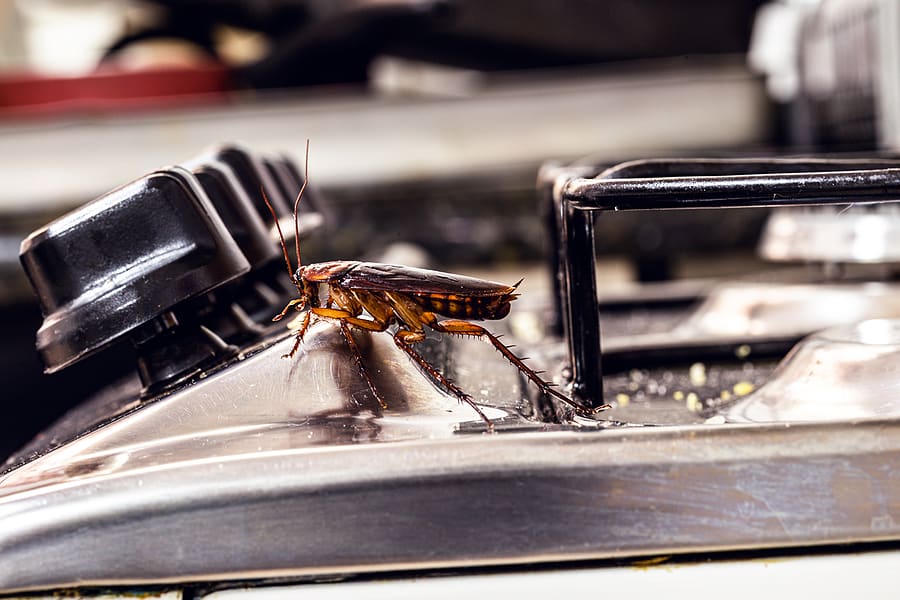
American cockroaches are a major household pest. Also known as water bugs and palmetto bugs, these pests are the largest of the cockroaches that infest homes. American cockroaches will make their way indoors in search of food and water. Their diet consists of leaves, wood particles, algae, fungi, small insects, food scraps, crumbs, and pet food. They can spread diseases and contaminate any surfaces they touch. They are also known to cause allergies and trigger asthma. These roaches will pick up germs on their legs and spread them to any surfaces they touch. They are known carriers of pathogens that cause diarrhea, cholera, leprosy, dysentery, plague, typhoid fever, and several viruses like poliomyelitis.
The first step in cockroach prevention is identifying the type of cockroach you are dealing with. Once that is determined, you can implement our favorite prevention tips to keep them from infesting your home.
American roaches are reddish-in color with a yellow band on the back of their heads. They range in size from 1-1/4″ to 2-1/8″ long, with some even reaching lengths of 3″. They have oval shaped bodies with 6 legs and a set of antennae. Despite their name, these cockroaches are found worldwide. Males and females both have wings and they can fly short distances. They can bite, but they rarely do. They normally live outdoors but will come inside looking for food and water. Outdoors they are commonly found in flower beds, trees, and under rocks. They are also commonly found in sewer systems. Inside the home they can be found in laundry rooms, kitchens, bathrooms, basements, and crawlspaces.
Learning how to spot signs of an roach infestation is critical to getting it under control. The most common sign is seeing the presence of cockroaches in your home. They will often flee to dark spaces when they’ve been discovered. They also leave behind droppings in the areas where they inhabit. These droppings have blunt ends and ridges on the sides and are often mistaken for mouse droppings. American cockroaches will also leave egg capsules behind. These are dark colored, about 8 mm long, and are often glued to surfaces near food sources. Finally, roaches emit a pheromone that gives off a musty odor. Smelling this in your home is another indication there is a cockroach infestation inside.
American roaches are highly resilient pests. They have evolved several adaptations over time that give them survival skills that make them difficult to eradicate. They can even survive up to a week without their heads! You can prevent cockroaches by:
If you have a problem with roaches in your home, contact your local pest control company who can identify what kind of roaches you have, how they are getting in, and the best treatment and ongoing prevention plan for your home.
Wildlife to Look Out for This Fall
Why Snake Control Is Important In The Fall
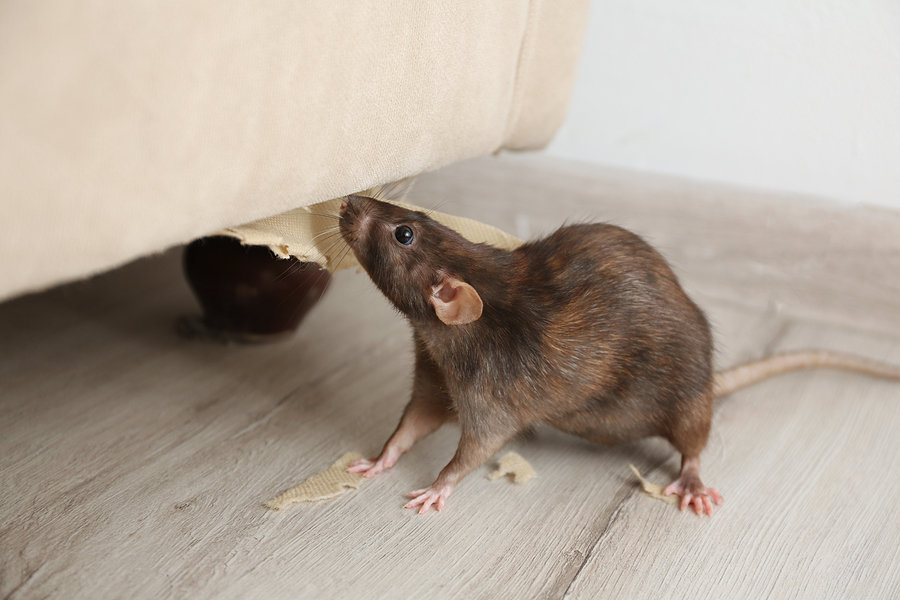
The last thing any homeowner wants to deal with is pests. A household pest is any insect or animal that is commonly found in a household structure that can cause destruction to the property or to your health. While the occasional critter can make its way inside, routine occurrences indicates the likelihood of an infestation. Fortunately there are some DIY pest control tips you can use at home to help prevent these pests from taking over. Here are a few of the most common household pests and how to prevent them.

Most ants don’t cause any structural damage to your home (with the exception of carpenter ants). They are, however, the #1 nuisance pest in the United States. Ants are difficult to control because their colonies are so large. These pests typically come indoors in search of food and water and can usually be found near these sources in your home – especially in kitchens and bathrooms. Prevent ants by:

Birds are not usually considered nuisance pests but their nests can obstruct common areas of your home and their droppings can contaminate or damage other areas. Birds usually enter your home in search of food and shelter. Prevent birds by:

Cockroaches are dangerous to humans as they are known to carry serious diseases and trigger both allergies and asthma. These pests multiply quickly, making them very difficult to control. Roaches will come into homes in search of food, water, and shelter, with them often found in kitchens, bathrooms, and laundry rooms. Prevent roaches by:

Termites are known as silent destroyers, eating wood from the inside out and going undetected for long periods of time. Common signs of termites include swarms; mud tubes; discarded wings; discolored drywall; peeling paint; wood with a hollow sound when tapped; squeaky floorboards; doors and windows that stick; damaged wood; loose tiles; and buckling floors. Prevent termites by:
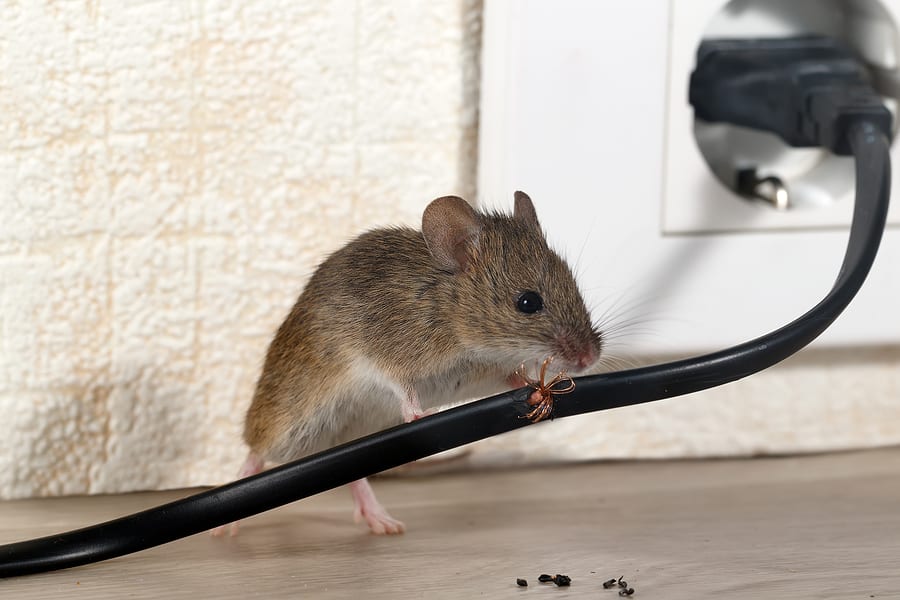
Rodents are common household pests and include rats, mice, squirrels, and raccoons. Rodents can cause significant damage to your property by chewing through electrical wires and insulation. They can also contaminate food and spread disease. Prevent rodents by:
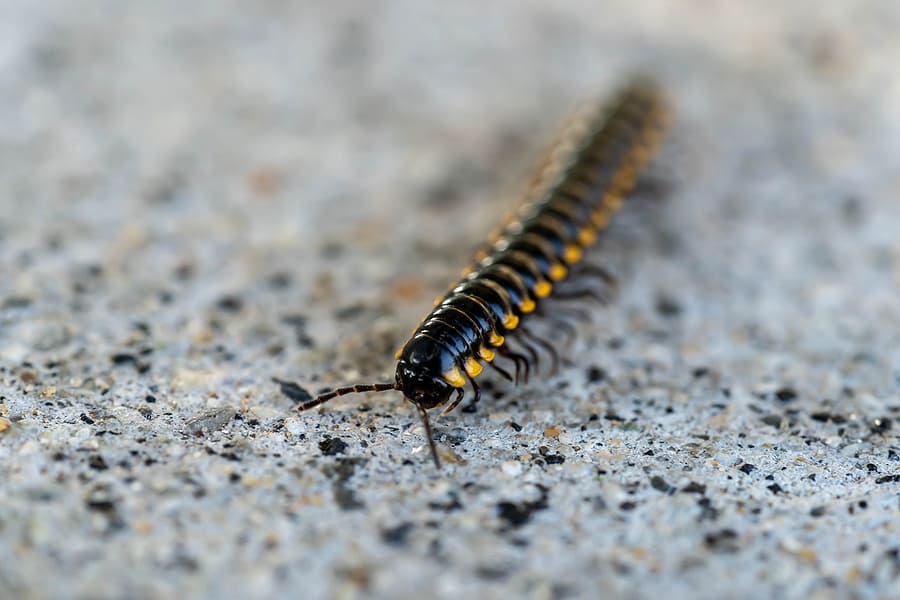
Centipedes are arthropods with 14 or more body segments and one pair of legs per segment. Millipedes are also arthropods but they have 2 pairs of legs on their body segments. Neither of these pests are considered dangerous and don’t cause damage or spread disease. They can, however, be annoying if they infest in large numbers. Both of these pests thrive in moisture-rich environments. Prevent centipedes and millipedes by:
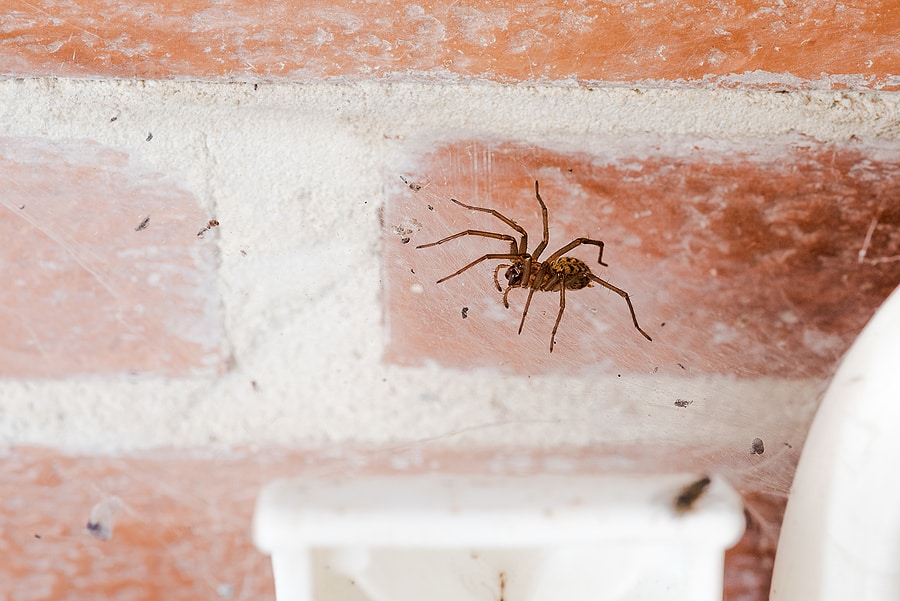
Although there are a few venomous spider species in our area, most spiders that make their way into your home are harmless (and even beneficial by eating other pests)! Prevent spiders by:
The key to household pest control is prevention. By taking these steps early, you can head off an infestation before it starts. If you have a problem with any household pests, contact your local pest control company for a free evaluation and comprehensive treatment plan.
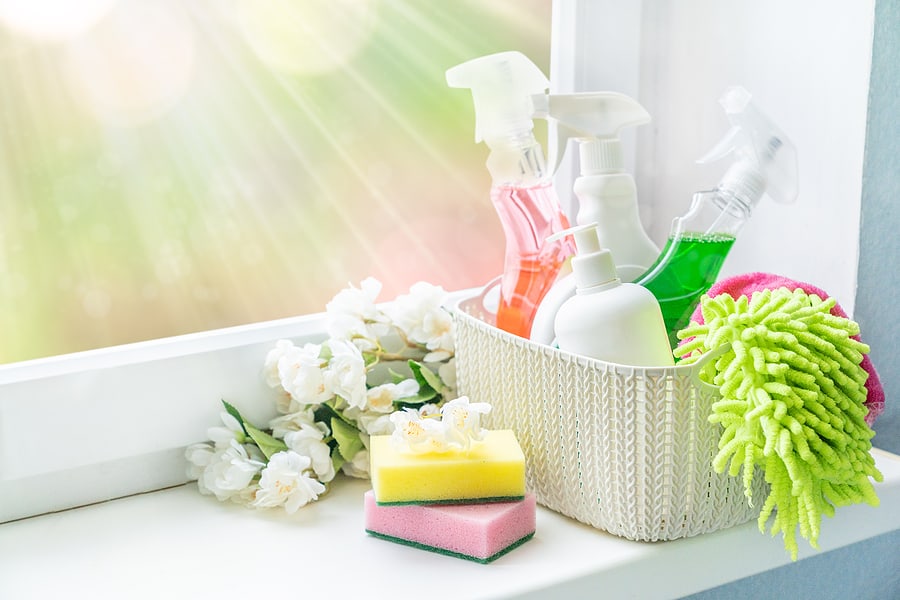
Spring is a perfect time to tackle home projects and deep clean the entire house! With warmer weather expected, it’s essential to get your home prepared and cleaned to make sure spring pests don’t infest!
For many, the kitchen is the heart and main area of the household. Family members gather, cook, and eat in this space, making the kitchen the ideal place for pests to take advantage of both food and water sources that are left behind. Pests like ants are known to infest the kitchen for these things they need to survive. Beetles and Indian meal moths are also searching for a food source, usually in pantries. To keep all these pests out, homeowners should make cleaning a priority all year long. Wipe down countertops after any spills or mess and clean up any food crumbs that might have dropped. Consider going through the kitchen pantry monthly to discard any expired items and wipe down the pantry shelves.
Keeping moisture out of your bathroom can sometimes feel impossible. Roaches and silverfish are two pests that are highly attracted to moisture and often found in the bathrooms of homes. With a little preparation and cleaning, every homeowner can eliminate moisture to keep these pests at bay. Check under the sinks and around the tub to ensure there are no leaks. Keep the bathroom decluttered by cleaning out the medicine cabinet and washing the shower curtain and liner.
Basements and crawlspaces are both dark and cool, making them the perfect place for pests to take refuge. Rodents and spiders are commonly found in these places and will often seek clutter and dark corners to hide in. Going through and eliminating cluttered items and belongings stored in the basement will help keep deter these pests. If storage is needed, avoid using cardboard boxes and use plastic bins with secure lids instead.
Keeping pests out of your home can sometimes feel impossible. If you notice more pests in your house than you can handle, consider reaching out to your local pest control company. These trained professionals can help identify the pests, provide a prevention plan, and treat areas as needed.
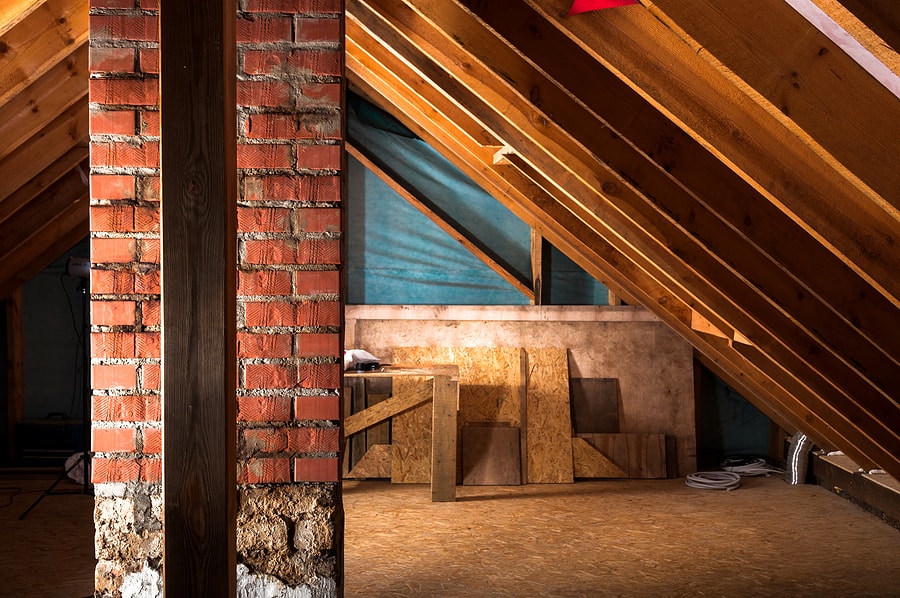
Main living areas such as kitchens, bathrooms, and bedrooms are all places that homeowners want to ensure are pest-free and wildlife-free year-round. While these spaces are always important to keep free of pests, it’s equally important to prevent them from entering the “forgotten rooms” in your home, as well. These forgotten areas include your basement, attic, and even extra storage rooms. Unfortunately, many homeowners are so focused on keeping the main living areas pest-free that they sometimes forget these other areas too.
Wildlife critters and household pests are looking for three things: water, food, and a warm environment. These three elements are easily available inside every home. Your attic is the perfect room for wildlife to make their home and for a pest to infest. Wildlife such as raccoons, squirrels, and birds can make their way through any openings or gaps leading into the attic. Sealing up any entry points is always a great start for wildlife prevention. Check your attic for any holes or gaps and seal them up immediately. In addition, inspecting your attic insulation is key to household pest prevention. Proper attic insulation can help prevent bugs such as roaches or ants from making their way inside.
Basements will often contain moisture by way of standing water, which provides pests and wildlife a plentiful water supply. Water is one of the main sources of attraction for pests like termites and millipedes. Cutting down moisture is essential to pest prevention. A moisture barrier for your crawlspace and a gutter protection system for your roof are great investments to help eliminate any standing water. These investments both help ensure that water is not filtering into your crawlspace and basement area.
If you suspect that you have a pest or wildlife infestation in your home’s “forgotten areas,” consider reaching out to your local pest control company. A professional will inspect these areas and provide you with a prevention and treatment plan.
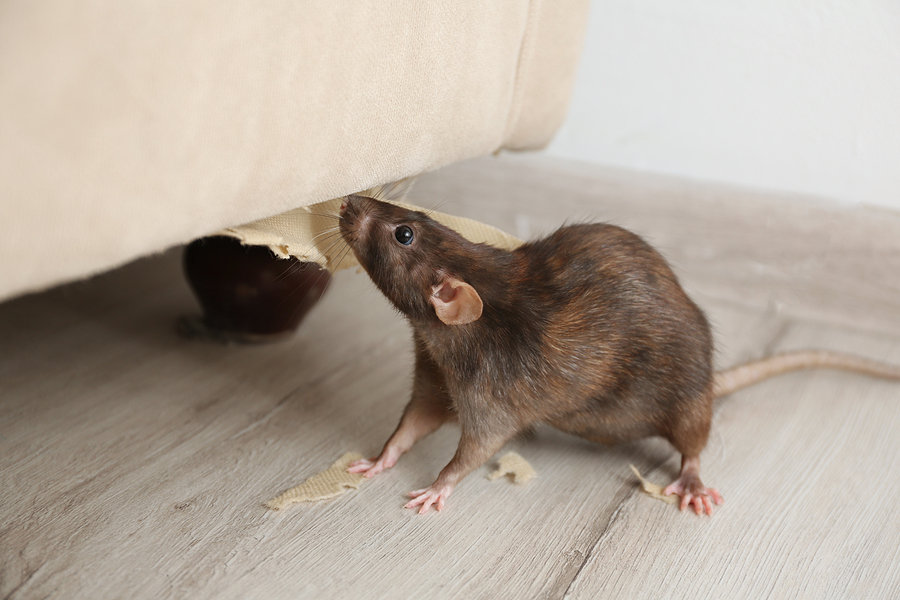
Pest control starts at home. By establishing a good line of defense on the home front, you’re less likely to need to mount an offense against those pesky pest invaders. Prevention is key to keeping a small pest problem from becoming a full fledged pest invasion. Here is our guide to home pest control:
The fewer pests you have outside your home means less of a chance they will make their way inside your home. Make your yard less hospitable for pests to reduce the likelihood they will move indoors. Keep tree branches and shrubbery trimmed back so they don’t touch your house. This helps eliminate “bridges” they can use to get inside. Mulch is also excellent for sheltering unwanted pests. Consider using a cover that is less attractive like rock. Clean out leaves and other debris from gutters or install gutter guards to help prevent standing water.
The best way to keep pests out is to find out how they can get in and eliminate these points of entry. Routinely inspect the entire exterior of your home for gaps, cracks, and crevices. Check foundations, loose siding, missing shingles, and gaps around utility lines (especially pipes, wiring, and cable). Seal any openings you find with either copper mesh, steel wool, sheet metal or mortar. Try not to use expanding caulk because some pests can still chew through this (think rodents!). Keep an eye out for signs of termites including mud tubes, damaged wood, or cracked and bubbling paint. Repair fascia and rotted roof shingles. Replace weather stripping and make sure to repair loose mortar. Use screens on windows, attic vents, and chimney openings.
Bugs tend to be more attracted to standard mercury vapor lightbulbs. Consider replacing your standard lightbulbs with high pressure sodium vapor or halogen bulbs instead. What the bulbs are made of aren’t the only thing you should consider. Check the color of the lightbulbs, as well. Bulbs with pink, yellow, and orange tints are less attractive to pests.
Garbage attracts pests like rodents, roaches, and even ants. These pests are also attracted to yard waste which can provide them with both a source of food and a nesting site. Use garbage and recycling cans with tight-fitting lids. Make sure to clean both the garbage cans and the area where they sit on a regular basis. Clean up any spills and leftover debris that these pests can feed on. Keep your deck, patio, garage, and yard clear of leaf litter, clippings, and standing water. Rinse all the food off anything you are recycling before putting them in the bin. Store your cans outside whenever possible.
Inspections shouldn’t be limited to outside the home. The interior needs to be inspected regularly, as well. While inspecting, make sure to look under, inside, and behind cabinets, the refrigerator, and the stove for signs of household pests. Look for gaps around pipes, vents, and cables and in the trim. If you find any gaps, seal them up, especially if they are 1/4″ in size or bigger. Check for moisture under sinks and repair leaky pipes, Use a dehumidifier in crawlspaces, attics, and basements.
Drains in the sink, tub, shower, and floor can hold moisture and accumulate debris and gunk. This not only attracts pests but also provides them with the ideal environment to breed in. Inspect and clean all your drains on a regular basis, including those in the laundry room and basement.
Establishing a regular cleaning routine helps keep your home clean, making it less attractive to pests. Keep food stored in containers with tight fitting lids or resealable bags. Never leave open food out overnight. Keep the pantry cleaned out regularly to get rid of spoiled food and other items. These steps will help eliminate pantry pests. Wipe down countertops daily and keep ripe fruit in the fridge. Wash dishes or load the dishwasher nightly and don’t leave dirty dishes in the sink overnight. Sweep, vacuum, and mop on a regular basis, as well. This not only disturbs the areas that pests may frequent but also helps eliminate crumbs and debris that can serve as a food source.
Pets aren’t immune to pest problems. Not only can pests hitch a ride inside on your pets, but their food and water also serve as attractants. Keep your pet’s food and water bowls clean and clean up any spilled food and water immediately. Launder your pet’s bedding in hot water every week. Store pet food in a sealable container. Per your vet’s recommendations, use appropriate flea and tick prevention as needed.
A small pest problem can escalate quickly; but with this handy guide to home pest control, you can take the necessary steps to prevent a pest infestation. If your pest problem has gotten out of control or you want a little extra help from a pro, contact a professional pest control company for a complete inspection and treatment plan.